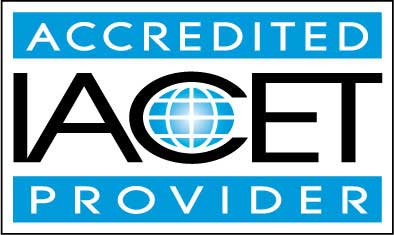Course Description
The Art of Etiquette in a Digital Age: Guiding the Next Generation
In an era where swift, digital interactions dominate, and where faceless communication often reigns supreme, the timeless principles of etiquette seem to be fading into the background. However, amid the cacophony of tweets, likes, and shares, the essence of genuine human connection remains rooted in respect, understanding, and good manners. Contrary to popular belief, etiquette is not a relic from a bygone era but a vital tool for navigating today's interconnected, digital world.
"Etiquette for Children and Teens" seeks to rejuvenate these fundamental principles for the modern age, particularly focusing on the impressionable minds of children and teens. These young individuals often find themselves straddling a world where influencers set trends and where virtual altercations can escalate rapidly. In such a landscape, understanding the core tenets of respectful interaction becomes paramount.
Key highlights of this course include:
- Digital Dilemmas: A deep dive into the complexities and challenges posed by platforms such as Facebook, Twitter, and other communication tools. Understand the pitfalls and potential risks that arise from faceless interactions.
- Age-specific Guidelines: Tailored advice and insights for two critical age groups—children aged eight through twelve and teens aged thirteen through seventeen. Each lesson melds universal principles with age-specific scenarios to ensure relevance.
- Beyond the Digital: While our digital lives are central, the course also emphasizes the importance of etiquette in face-to-face interactions, be it at school, social gatherings, or later in professional settings.
- Empowering the Mentors: Designed for educators, parents, caregivers, and anyone vested in molding the next generation, this course equips them with the tools to instill a deep-rooted sense of decorum in young minds.
Good etiquette transcends societal divisions of wealth or power. It's a universal language of respect, available to anyone willing to learn and practice it. Furthermore, etiquette skills aren't just momentary tools; they're lifelong assets, paving the way for personal and professional success.
Ideal for those keen on teaching etiquette or parents striving to groom well-rounded individuals, this course distills vast knowledge into relatable, easy-to-understand modules. Equip yourself and the next generation with the refined skills to thrive with grace, confidence, and respect in a world where digital and real-life personas seamlessly blend. After all, in the dance of human interactions, etiquette is the rhythm that ensures we move in harmony.
- Completely Online
- Self-Paced
- Printable Lessons
- Full HD Video

- 6 Months to Complete
- 24/7 Availability
- Start Anytime
- PC & Mac Compatible
- Android & iOS Friendly
- Accredited CEUs

Learning Outcomes
- Define etiquette and explain its significance in personal and professional contexts.
- Demonstrate understanding of etiquette through practical application in simulated social scenarios, reflecting cultural and contextual awareness.
- Demonstrate appropriate self-introduction techniques in both professional and personal settings by engaging in role-play scenarios.
- Identify effective icebreaker questions to initiate conversations that align with the setting and establish mutual interests with new acquaintances.
- Define and demonstrate the ability to initiate, nurture, and gracefully conclude conversations using effective communication strategies taught in the lesson.
- Recognize and apply active listening skills to enhance understanding and empathy during conversations, as highlighted in the lesson material.
- Apply email etiquette techniques by structuring clear messages and using polite language to avoid misunderstandings in professional communication.
- Demonstrate appropriate telephone and cell phone etiquette by using polite greetings and maintaining transparency in conversations.
- Define strategies to effectively mitigate conflicts in public spaces by employing calm communication and authority assistance when necessary.
- Demonstrate understanding of cultural sensitivities in international environments by adapting behavior to align with local customs and norms.
- Demonstrate the ability to distinguish between paid employment and volunteer work by identifying key characteristics and unique benefits of each opportunity.
- Describe appropriate workplace etiquette by interpreting scenarios to determine respectful and professional interactions in diverse employment and volunteer environments.
- Identify and demonstrate the correct use of silverware and table manners in a formal dining setting for an enhanced dining experience.
- Demonstrate mastery of lesson content at levels of 70% or higher.
Assessment Guide
| Assessment | Points |
|---|---|
| An Introduction | 1 points |
| Lesson 1 : Introduction to Modern Etiquette | 9 points |
| Lesson 2 : Meetings and Introductions | 9 points |
| Lesson 3 Activity | 1 points |
| Lesson 3 : Conversation and Listening Skills | 10 points |
| Lesson 4 : Telephone/Cell Phone, Texting, Emailing and Internet Etiquette | 9 points |
| Lesson 5 : Etiquette in Public Places | 10 points |
| Lesson 6 Activity | 1 points |
| Lesson 6 : Employment/Volunteer Etiquette | 9 points |
| Lesson 7 Activity | 1 points |
| Lesson 7 : Dining Etiquette | 10 points |
| Lesson 8 : Social Gathering Etiquette (Guest and Host/Hostess) | 10 points |
| Lesson 9 Activity | 1 points |
| Lesson 9 : School Etiquette | 10 points |
| Lesson 10 : Confidence Without Arrogance | 10 points |
| The Final Exam | 48 points |


